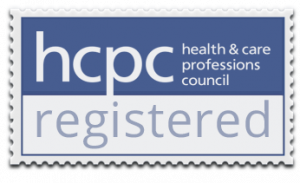
The thing that often surprises leaders the most once they get to the top is how much harder they have to work to stay there. The times where being a leader meant having the cushiest office and giving orders seem to be long gone. Sure, you can still have a nice office, but as any seasoned executive will tell you, leadership is not about perks and privileges. It’s about constantly navigating through challenges and staying ahead of the game.
Not only do you have to deal with serious situations like marketplace fraud and protecting your employees’ data, but also while keeping up with societal shifts like the push for eco-friendly holiday celebrations. How can executives stay on top of their leadership game?
Here are four tips that will help guide you through any leadership challenge!
Tip 1: Embrace Change
In the fluid landscape of today’s marketplace, mastering adaptability underscores leadership success.
A leader thrives by not being in a vacuum, but in an environment that fosters openness to new ideas, receptivity to team feedback, and a constant pulse on industry evolution. For instance, the rising tide of eco-consciousness presents a dual challenge to modern leaders. They must seamlessly weave sustainability into their business blueprints without sacrificing quality or profit, all while avoiding the pitfall of insincerity.
Authenticity, paired with steadfastness to core values amidst shifting societal norms, paves the path to leadership triumph.
Anyone can lead when the wind is at their back, but true leaders rise to the challenge when the tide turns. That means being open to new perspectives and ideas, listening to their team’s feedback, and consistently adapting in the face of change.
Tip 2: Communicate Effectively
Communication is key in any leadership role. As an executive, it’s important to establish open and honest communication channels with your team.
Opening your ears to your team’s thoughts and responses often means sharing your decision-making journey. This builds faith and dedication and enhances problem-solving capacities.
When you’re a leader, you’ve probably got confidence in your DNA. But this confidence might lock the door to self-improvement. That’s why I suggest regularly examining your communication skill and desire. Requesting feedback from peers and others helps you know if you’re on the right track; doing the right things and in the right way.
Paying close attention to how you communicate in different situations and with different individuals is a great way to listen to the needs of others.
Do you fine-tune your leadership style to resonate with your team? If your answer is no, it might be time for introspection and minor adjustments. Are you actively tweaking your communication strategies to bolster ties with your teammates?
Effective communication forms the bedrock of strong leadership. This doesn’t simply mean delivering your message; equally critical can be the ability to listen actively and understand various viewpoints. Establishing a high level of interaction with your team, soon helps you see a marked increase in productivity and unity.
Tip 3: Take Charge of Your Employees
In the challenging corporate world, executives often find themselves handing off critical tasks to their teams.
However, true leadership sometimes involves shouldering the responsibility of the team’s actions and results. It’s not about passing the buck, but about taking charge of the situation, guiding your team through the rough waters of a project. It is also about fearlessly confronting issues that arise within your team. Tough conversations are a part of the game and there’s no one better to play this part than the team’s leader.
Cultivating a team environment where accountability and ownership are the norm, and showing the way by embodying these values yourself, is a positive step. The response from your team can often be increased motivation and a willingness to take the reins on their responsibilities.
This can build an environment of trust and respect.
Tip 4: Keep on the Leading Edge
Leadership in today’s world demands a relentless quest for knowledge and innovation.
As a leader, it can be crucial to stay in sync with market trends, absorb fresh concepts, and flexibly respond to the shifting business environment. Seeking learning opportunities, connecting with industry innovators, and attending events are all ways to make this happen. They keep you aware of innovations that can positively impact your business or team.
It’s worth the effort to strive for better procedures, superior strategies, and improve results. Your competitors are not stagnant, and this way neither are you.
Including your team in this growth journey helps too. Motivating them to uncover new perspectives and disseminate their learnings among peers, is a positive way of being inclusive. This not only cultivates an atmosphere of knowledge and development but ensures everyone works from a common understanding.
Ultimately, being a successful leader is not about having all the answers, but might be about knowing where to find them. Your journey of learning could be continuous this way, helping you to face leadership challenges head-on. Being proactive, evolving, and remembering that leadership, like learning, is an ongoing process. This seems to be the key.
Wrapping Up
Being a successful leader in today’s fast-paced and competitive marketplace requires constant growth and adaptation.
Navigating leadership challenges requires a toolkit of strategies that ensures efficacy and confidence. Included in this article are four key tips: embodying the values you espouse, ensuring clear and open channels of communication, nurturing a collaborative team environment, and consistently staying ahead of industry trends.
These tools form the cornerstone of successful leadership; a role that goes beyond personal achievement to include motivating others towards collective success. Being a leader is often tough, but embracing the role with resolve, enthusiasm, and steadfast dedication builds a strong work ethic and a positive culture.


